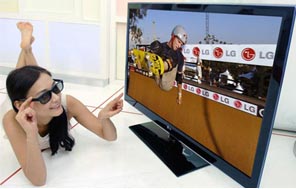Before you invest in that 3-D TV technology be aware that 3-D is not for everyone. Between 4 to 10% of the American population have difficulties viewing 3-D televisions.  In this blog, I will attempt to explain in lay terms why that occurs.
In this blog, I will attempt to explain in lay terms why that occurs.
The eyes work together in our vision to help create depth perception. Obviously, our eyes are in two different positions in the head. Our brain is able to measure the distance or difference between our two eyes and the image to produce the sensation of depth. This has been shown to occur in infants as early as two months of age assuming that every aspect of this complex system is working appropriately. If the eyes cross or do not focus together or if the area of the brain responsible for processing these images is not working, problems and complications can occur in depth perception.
Technology for 3-D television works by simply having each eye look at two different images. Initially this was accomplished by utilizing red and green glasses producing a red image for one eye and a green image for the other eye. Newer technology uses horizontal and vertical strips in the glasses that create slightly offset images that produce different images in each eye creating the 3-D effect.
This image difference over time causes the muscles of the eyes to work harder than normal to help focus the image. This can lead to eye fatigue and strain if watching a 3D presentation for a long period of time. Also the images “jumping out” from the screen increase the strain of accommodating to keep the image clear. Prior to buying a 3-D television I would recommend going to a store and looking at a demo set and see if you are first able to appreciate the 3-D effect. If this does work and you purchase the television, I would suggest taking periodic breaks while watching 3-D and also adjusting the contrast and brightness settings. Visit our website for more information.



